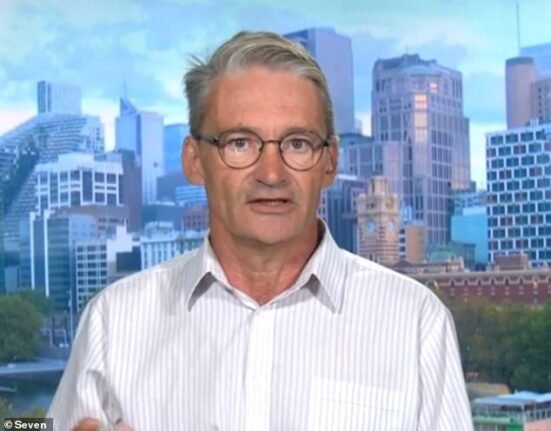If an investor had placed their money into a standard global equity tracker this time last year, they may be forgiven for thinking not much has happened in markets since.
The MSCI ACWI index is up 7% since July 2024 and 1% year to date, and that’s amid US tariff announcements and delays, concerns over fiscal sustainability and ongoing conflicts in Ukraine and the Middle East.
With multi-asset managers having the ability to go anywhere, how have they navigated the choppy start to the year and how are they positioning themselves moving into the second half of 2025?
“While conflict in the Middle East and Europe has had tragic humanitarian outcomes, the markets have, by and large, looked through this,” says Michael Jervis, portfolio manager – multi-asset at Sarasin & Partners.
“Rather, it is the current US administration that has kept everyone on their toes. The question on our minds is: whatever next? While we believe we have passed peak impact in some areas – Doge [Department of Government Efficiency], for example – the potential for volatility remains high.
“In particular, while the shock and awe of liberation day has passed, we are closely watching for the ultimate landing zone on tariff rates, and the impact the prolonged uncertainty has on corporate activity.”
Equities – US rotation
One of the major stories in markets in the first half has been the potential for investors to broaden their equity exposure beyond US assets. With the market-leading US mega-cap tech stocks looking expensive, combined with uncertainty around the direction of fiscal policy and trade wars, investors have given more thought to other regions.
Maya Bhandari, Neuberger Berman multi-asset CIO, EMEA, says markets have moved from a ‘Tina’ (there is no alternative) scenario, with US equities the dominant force, to ‘Tara’ (there are real alternatives).
“We continue to favour non-US over US equities,” she says. “To be clear, that’s not a negative view on US equities. US equities are neutral, but we have a clear preference for Europe and Japan, as well as emerging markets. Those are the three areas we are pointing towards as areas we think have both good earnings and re-rating potential.
“Japan is one of the markets we upgraded after our last Allocation Committee. We’ve had a period of soft relative earnings from Europe and Japan, and there’s some scope for some of those gaps to close to the US.”
On the whole, a modest equities rotation has taken place with multi-asset managers taking advantage of Europe’s improving backdrop by trimming their US exposure and redirecting some of that capital elsewhere.
Head of mixed assets investment at Newton Paul Flood says his team have not made major adjustments to their allocations during the opening months of the year, owing to uncertainty around how tariff discussions would play out. “Since then, the pitch has become a little bit clearer and we’ve been making a few changes to the portfolio.”
While not a major shift, Flood has trimmed exposure to US industrials, reallocating to opportunities in Europe following the announcement of Germany’s fiscal spending package, which is set to inject up to €1trn (£0.86trn) into European defence and infrastructure.
“The outlook for European fiscal spending has changed, and so we’ve been trying to reallocate back into areas where we think there are reasons to be optimistic and play some of the similar themes that have happened in the US but haven’t quite played out in Europe yet.
“When we think about the infrastructure spending, grid requirements and demand for power, we’ve seen the whole data centre investment in AI in the US. That is yet to come to Europe and hasn’t really been priced into some of the beneficiaries. We’ve been reallocating from the winners of that in the US into where we expect the narrative to flow going forward in Europe.
“Overall, it’s a bit of a change in geographical exposure at the margin, not a massive shift.”
While Jervis also senses a modest move away from US assets, he cautions against the likelihood of a wider rotation.
“We have to remember the US has the largest and most liquid capital markets in the world, spanning almost every asset class. In a way, that makes them too big to fail completely.
“For example, the US remains home to some of the most globally dominant and fastest-growing businesses in the world – these will likely be attractive investment opportunities for many years to come. While we see the logic for a modest further rotation, the US capital markets still have many favourable features that investors will be reluctant to turn their backs on completely.”
Macro and fixed income
Looking ahead to the rest of the year, the potential for inflation to rise once again is a risk multi-asset managers are looking out for.
US inflation has eased since 3% at the beginning the year to 2.4% in May, though it remains above the Federal Reserve’s target of 2%, according to the latest data available for May.
US trade policy could once again come to the fore in the second half, with investors also concerned around the risks it poses to economic growth.
The initial tariffs announcement on 2 April shocked global markets, though they largely bounced back after US president Donald Trump imposed a 90-day delay.
Before tariffs captured news headlines in April, US inflation was trending down and economic growth was robust, while consumers and businesses felt relatively optimistic about the future.
“Now, as we approach mid-year, the situation has shifted,” notes Allspring head of multi-asset Matthias Scheiber. “US growth turned negative for the first quarter due to a surge of imports into the US ahead of the tariffs’ start dates, and consumer inflation expectations have risen sharply.
“Although there is ongoing uncertainty regarding the legality of the US tariffs and how extensively they’ll be applied, we expect them to stay for now.
“Given their importance as a trade-rebalancing tool, they could become a cornerstone of US economic policy.”
Scheiber says it is likely the costs of higher tariffs will be passed on to consumers, placing the Federal Reserve in a difficult situation.
“On the one hand, growth is slowing, which would call for more rate cuts – but on the other hand, the medium-term consequences of higher inflation expectations are difficult to assess due to a lack of details regarding what lies ahead for US tariffs.
“Their initial implementation and the countermeasures taken by other countries have led to confusion and worry among investors – and to sharp market swings since the tariffs were announced.”
Considering the risk of an inflationary spike ahead, some investors favour the treasury inflation protected securities (Tips) market for their protection against an upside surprise. Within their US fixed-income allocation, Neuberger Berman’s Bhandari says the Tips market is an interesting opportunity.
“The area where we are positive in the US on the fixed-income side is the Tips market, being mindful of that broad inflation setup,” she says. “It comes right back to tariffs, the greater focus on fiscal policy, and waves of geopolitical uncertainty that could really disrupt oil all adding up to present an upside risk to inflation and a downside risk to growth.”
“We’ve also upgraded US investment-grade and that reflects a positive tilt on US duration at current valuations. At investment-grade, spreads are quite tight and as such, over two-thirds of your return comes from duration.”
Sarasin’s Jervis also favours short-dated inflation-linked Tips, suggesting the market may well be underestimating the level of inflation in the US over the next few years.
Overall in the bond universe, Goldman Sachs Asset Management’s multi-asset team sees value in bonds in the second half of 2025 for their income and return potential, as well as their potential ability to diversify multi-asset portfolios amid equity market volatility and growth concerns.
“However, with spreads tight in what is an uncertain environment, investors may need to explore opportunities across the fixed-income universe, including securitised sectors,” the firm’s multi-asset team notes.
“Systematic strategies based on disaggregated drivers of asset prices and returns can be considered. Importantly, such drivers do not depend on specific macro, market or policy outcomes. This approach has been increasingly relevant throughout the 2020s, when the only certainty has been uncertainty.”
Balancing act
Looking ahead, each manager was asked for any key indicators they’ll be keeping a close eye on for the remainder of the year. Unsurprisingly, focus remains firmly on both the White House and the US economy.
“With this US administration in place, we will have our eyes peeled all year,” says Sarasin’s Jervis. “To name a specific data point, US inflation is key. However, as long-term investors, it is important we stay grounded and do not lose sight of the overarching fundamentals.”
“One of the things we are all watching for closely is to get a sense on where the US economy is, because that links very much with what we might get from the Federal Reserve,” adds Neuberger Berman’s Bhandari.
“We’re coming up to four years of central banks missing their inflation targets, there’s much more focus now on less forward-looking data.
“The labour market is typically not a leading indicator of economic activity, it tends to be a slower moving component of the real economy. But, as we are looking towards some weakening in the labour market, it is really holding the key to the future of Fed policy.
“We broadly agree with the 100 basis points or so of cuts that are priced in for the US over the next year, but expect those to come through sooner and that is predicated on expectations of the labour market weakening a little bit.”
The potential for volatility remaining high over the second half presents a difficult balancing act for asset allocators, who are weary of rebounding inflation and decelerating growth. With the Fed caught between these two and US trade policy uncertainty likely to play out over the rest of the year, genuine diversification across regions and asset classes looks set to define successful multi-asset strategies in the months ahead.
This article first appeared in the July/August issue of Portfolio Adviser magazine







